Related Research Articles

Gaspare Luigi Pacifico Spontini was an Italian opera composer and conductor from the classical era.
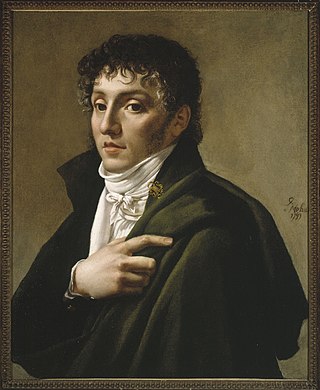
Étienne Nicolas Méhul was a French composer of the late classical and early romantic periods. He was known as "the most important opera composer in France during the Revolution". He was also the first composer to be called a "Romantic". He is known particularly for his operas, written in keeping with the reforms introduced by Christoph Willibald Gluck and Wolfgang Amadeus Mozart.
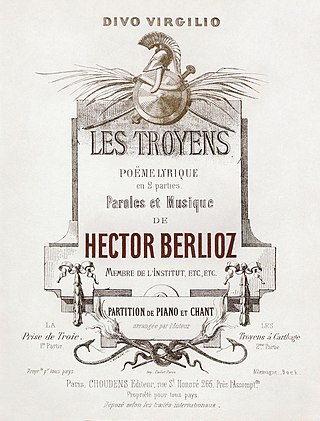
Les Troyens is a French grand opera in five acts, running for about five hours, by Hector Berlioz. The libretto was written by Berlioz himself from Virgil's epic poem the Aeneid; the score was composed between 1856 and 1858. Les Troyens is Berlioz's most ambitious work, the summation of his entire artistic career, but he did not live to see it performed in its entirety. Under the title Les Troyens à Carthage, the last three acts were premièred with many cuts by Léon Carvalho's company, the Théâtre Lyrique, at their theatre on the Place du Châtelet in Paris on 4 November 1863, with 21 repeat performances. The reduced versions run for about three hours. After decades of neglect, today the opera is considered by some music critics as one of the finest ever written.
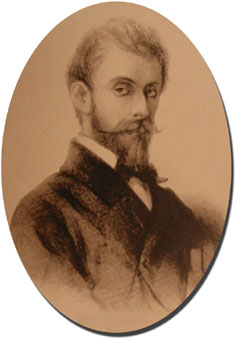
Louis Étienne Ernest Reyer was a French opera composer and music critic.
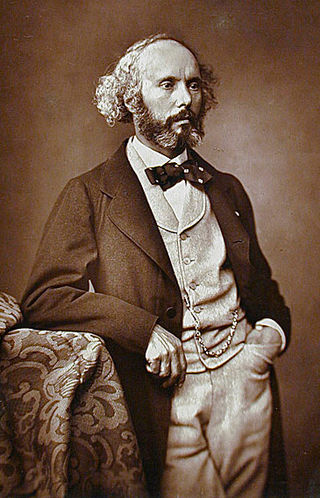
Félicien-César David was a French composer.

Joseph Méry was a French writer, journalist, novelist, poet, playwright and librettist.

Véronique Gens is a French operatic soprano. She has spent much of her career recording and performing Baroque music.
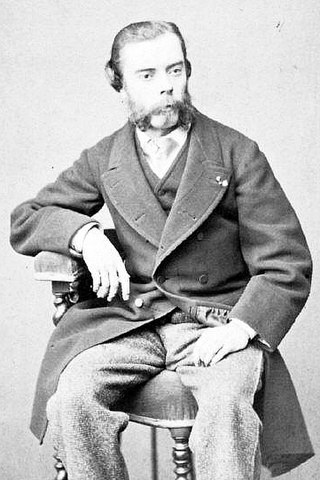
Eugène Ketterer was a prolific French composer and pianist who was known for his numerous salon arrangements of contemporary opera arias.
Jules Bastin was a Belgian operatic bass who excelled in both serious and comic roles, and left several recordings.

The Théâtre Lyrique was one of four opera companies performing in Paris during the middle of the 19th century. The company was founded in 1847 as the Opéra-National by the French composer Adolphe Adam and renamed Théâtre Lyrique in 1852. It used four different theatres in succession, the Cirque Olympique, the Théâtre Historique, the Salle du Théâtre-Lyrique, and the Salle de l'Athénée, until it ceased operations in 1872.

Rosine Bloch was a French operatic mezzo-soprano of Jewish descent who had a successful stage career in Europe between 1865 and 1891. She not only possessed a beautiful, warm, and lyrical voice but was also a remarkably beautiful woman physically. Although most of her career was spent performing at the Opéra in Paris, she also appeared in stages in Belgium, Monaco, and England.

The Salle Ventadour, a former Parisian theatre in the rue Neuve-Ventadour, now the rue Méhul, was built between 1826 and 1829 for the Opéra-Comique, to designs by Jacques-Marie Huvé, a prominent architect. The original theatre had a capacity of 1,106, but was subsequently taken over by the Théâtre-Italien and expanded to a capacity of 1,295 in 1841, thereafter becoming perhaps most noteworthy as the theatre in which the majority of the operas of the Italian composer Giuseppe Verdi were first performed in France. When the Théâtre-Italien company went out of business in 1878, the theatre was converted to offices.
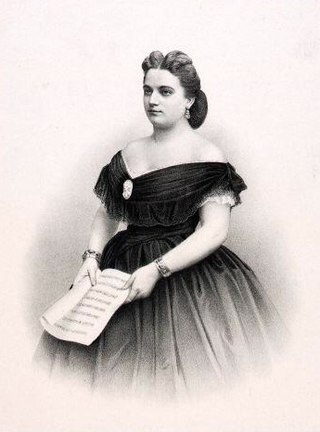
Marie Constance Sasse [Sax, Saxe, Sass] was a Belgian operatic soprano. "Her voice was powerful, flexible, and appealing", and she was one of the leading sopranos at the Paris Opéra from 1860 to 1870. She created the roles of Elisabeth in the Paris premiere of Wagner's Tannhäuser, Sélika in the world premiere of Meyerbeer's L'Africaine, and Elisabeth de Valois in the world premiere of Verdi's Don Carlos.
Jean Giraudeau, was an artist and French tenor, and later theatre director, particularly associated with the Opéra-Comique in Paris, and described in Grove as having a “lyrical voice” as well as being “a superb character actor”. He left a wide selection of recordings from both his operatic and concert repertoire, and created roles in several contemporary operas.

Désiré Magnus was a Belgian concert pianist, teacher and composer of salon music who published under the pseudonym D. Magnus.

Les Heures persanes, Op. 65, is one of the most famous works of the French composer Charles Koechlin.

Pauline Guéymard-Lauters was a major opera singer in Paris in the 19th century, creating important soprano/mezzo-soprano roles at the Paris Opera. Her vocal range has been described as “a soprano of wide extension”.

Oscar Comettant was a 19th-century French composer, musicologist and traveller.
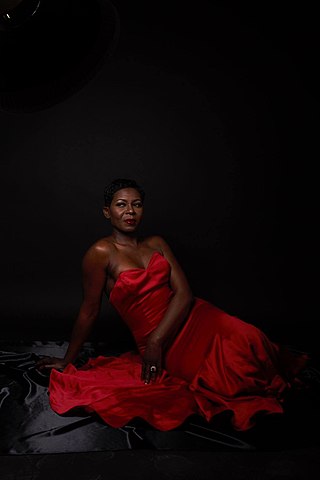
Lydie Lamine, also known as Lydie Pace, is a Central African singer. She has won several awards during her career, including the Prix de Chant Lyrique.

Charles-Amable Battaille was a French operatic bass. Appreciated both for his voice and his acting skills, he premiered the main bass roles for the works represented at the Opéra-Comique between 1848 and 1857, and is especially notable as the first singer of the role of Peter the Great in Meyerbeer's L'Étoile du nord (1854).
References
- 1 2 Macdonald H. Félicien David. In : The New Grove Dictionary of Opera. Macmillan, London and New York, 1997.
- ↑ Macdonald H, ed. Selected letters of Berlioz (translated by Roger Nichols). Faber & Faber, London and Boston, 1995.
- 1 2 Locke, Ralph P. Music, Musicians and Saint-Simonians. The University of Chicago Press, Chicago and London, 1986, p209-210.
- ↑ Barzun J. Berlioz and his century – an introduction to the age of romanticism. Meridian Books, New York, 1956.
- ↑ Walsh T J. Second Empire Opera: The Théâtre Lyrique Paris 1851–1870. John Calder (Publishers Ltd), London, 1981.
- ↑ Budden J. Verdi (the Master Musicians). JM Dent and Sons Ltd, London & Melbourne, 1985.
- ↑ Lacombe H. The Keys to French Opera in the Nineteenth Century. University of California Press, Berkeley, 2001.
- ↑ Yon, Jean-Claude. Jacques Offenbach. Éditions Gallimard, Paris, 2000.
- ↑ Wikisource text of Robur the Conqueror